Ilha da Queimada Grande: The Forbidden Snake Island
Ilha da Quemada Grande is not a place most people have on their wish-list of travel destinations. Roughly 20 miles off the coast of Sao Paolo, Brazil, this little island has remained almost completely untouched by humans (in fact, the only human infrastructure is an autonomous lighthouse maintained by the Brazilian Navy!). Only 430,000 square metres in size, the isolated island seems like it would be a tropical paradise that has escaped the rapid development of the mainland...however, the beauty of the island conceals a deadly threat.
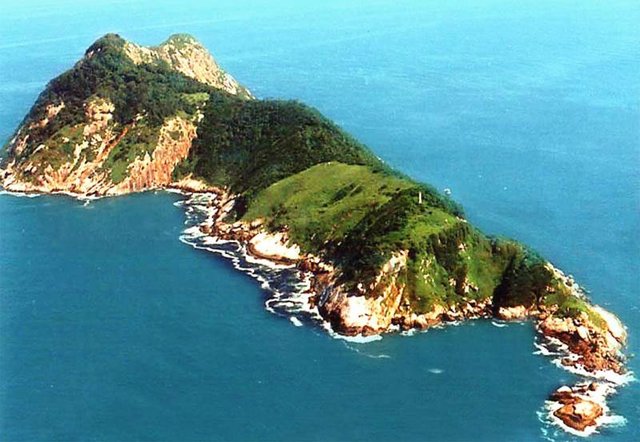
Ilha da Quemada Grande has another name: Snake Island. As one would probably guess from the name, the island is covered in snakes...literally. Researchers visiting the island estimate that there are between one and five snakes per square meter on Snake Island [source]. Such a high density of serpents is surely enough to keep most sane people away, but these aren't small, harmless snakes. The island is the only place on Earth where the golden lancehead viper (Bothrops insularis) can be found, a snake that is fairly large and incredibly venomous. And they are EVERYWHERE. These snakes pose such danger that the navy has expressly forbidden travel to the island.
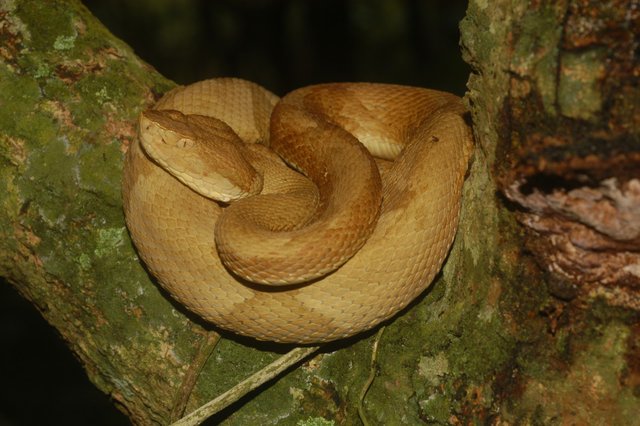
So how dangerous is the golden lancehead? Well, back on the mainland the lancehead genus of snakes is responsible for 90 percent of Brazilian snakebite-related fatalities. Without treatment, the mortality rate is around 7%...and even with treatment, the rate can be as high as 3%! The venom causes symptoms such as kidney failure, necrosis of muscular tissue, brain hemorrhaging, and intestinal bleeding; it eats its way through the body's tissues as neurotoxins finish off the victim. Horrifying to say the least, but it pales in comparison to the venom of the golden lanceheads of Snake Island. While there is little to no data on the bites from this species of snake (no records exist since the island is essentially under quarantine), chemical analyses of the golden lancehead's venom suggests that it is faster acting and far more powerful (as much as five times more powerful) than their mainland cousins. It is regarded as the world's most venomous viper...and even with a conservative estimate of one snake per meter, "you are never more than 3 feet away from death" [source].
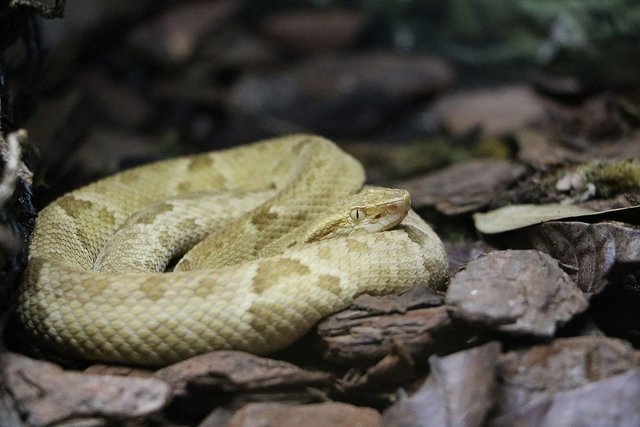
Today, very few people visit the island. With permission from the navy, herpetologists and researchers conduct studies with lancehead venom, hoping to unlock critical pharmaceutical discoveries. Naval technicians must occasionally journey ashore to tent to the lighthouse. Despite the quarantine on the island, it is commonly believed/assumed that poachers visit the island to capture these rare snakes (a single animal can fetch up to $30,000 on the black market [source]). Along the coastal communities, stories and urban legends of those who have been killed by snakes or simply disappeared in the vicinity of the island are quite common. Tales of men who wandered ashore after their boats broke down, unaware of the danger lurking everywhere, only to be later be found in their boat in a pool of blood, or someone who landed on the island to pick fruit and never returned. Perhaps the most common story is that of the last lighthouse keeper and his family. Rumor has it that in the early 1900's, the family tried to flee when snakes crawled in through the windows; their bodies were later found scattered across the island as they tried to escape. While these stories may just be tall tales, the fact remains that Snake Island is an incredibly hostile location that has, in all likelihood, claimed a number of lives.
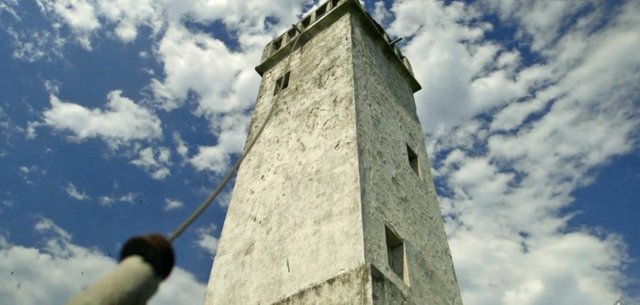
Scientists have long been puzzled as to why the snakes' venom is so much more potent than those on the mainland, but there is a leading theory. Approximately 11,000 years ago, there was a rise in sea level that completely cut the island off from the mainland. The snakes living on the island were cut off from most food sources except for one: migratory birds. However, hunting with venom has one major downside; you have to wait for the venom to take effect. This of course presents a problem when preying on birds; after envenomating a bird, it is incredibly likely that they will fly some distance away before succumbing to the venom. As a result, the snakes gradually evolved incredibly potent venom that killed their prey almost instantaneously, giving them virtually no chance to escape.
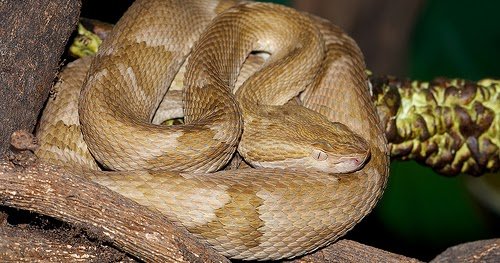
Today, the snake populations on Snake Island are facing a gradual decline, as much as 15% over the past 15 years. Due to inbreeding, many offspring are born completely sterile, and large numbers of these snakes are being wiped out by disease. With the entire population of golden lanceheads isolated on this single island, the IUCN lists the species as critically endangered. Biologists are now hoping to save the species; they believe that the potent venom could have a number of useful applications in human medicine. Their numbers may be slowly falling, but Snake Island is still home to thousands of golden lanceheads. And as long as the island maintains its lethal inhabitants, Ilha da Quemada Grande will remain as perhaps the worst holiday destination for any tourist!

upvoted resteemed and promoted good luck bro, watch your step
Have you seen the treasure hunting show on that island? That island can keep it's golden lanceheads thank you very much.
I have and it's definitely an interesting show (I had a feeling someone would bring it up!). Of course, I don't think they are in a whole lot of danger; when journeying ashore, teams usually consist of wildlife biologists and members of the Brazilian Navy. Medical teams are also on standby. That's of course not to say it isn't dangerous, but no one gets on that island legally without a lot of assistance and supervision!
What a crazy place! Even with the diminished numbers...That is still a lot of deadly snakes hanging out in trees. :)
I wonder how many birds need to be caught every day to sustain such a large population. Truly fascinating stuff :-)
Luckily snakes have a low metabolism and don't need to eat nearly as often as mammals do. More than likely, an individual snake probably only eats one bird every few weeks. You're right though: with thousands of snakes on the island, that has to be a huge number of birds. I believe some sources indicate that the snakes are also cannibalistic, and will occasionally feed on other lanceheads when the need arises.
WOW i dont think i would step into the snake island... thanks very much!! you are very brave!!
A day on this island would be the best punishment for rapists. Most inhuman punishment for the most inhuman act.
Wow, that is serious
This post has been voted on from MSP3K courtesy of @thinknzombie from the Minnow Support Project ( @minnowsupport ).
Bots Information:
Join the P.A.L. Discord | Check out MSPSteem | Listen to MSP-Waves
wonderful nature with sea blue and green but who wants to go and live there. so I think the good one is looking photos. thank you for providing this to us:)
Holy crap!! My interest in this post is only eclipsed by my terror!! Great post and what a public advisory, @herpetologyguy! Guess it's just best to drown at sea if you're floating near this island!!
Please check this out, my old post on snake Island. Please upvote if you like it
https://steemit.com/science/@coinlust/ilha-da-queimada-grande-the-forbidden-island